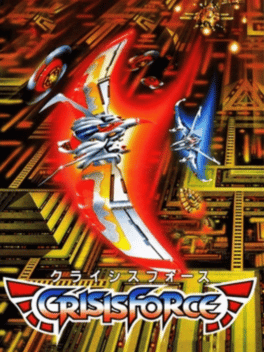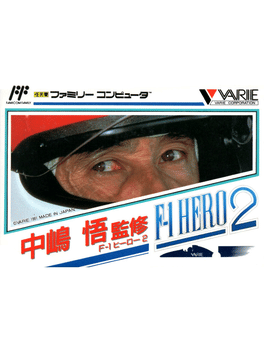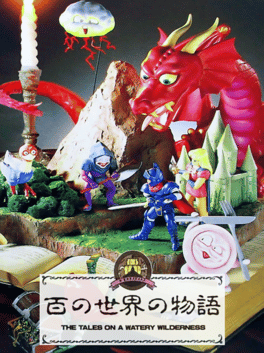New Famicom Games - Page 21
-
Crisis Force
1991
Crisis Force
1991
star 6.5The denizens of Atlantis have arisen after a slumber of 10,000 years, and only Asuka and Maya can save the world from destruction in their Aurawing aircraft! Crisis Force was Konami's last shoot-'em-up game for the Famicom, and it pushes the hardware to its absolute limits. -
Spartan X 2
1991
Spartan X 2
1991
Slums, subways and a smugglers' ship lead Johnny to microchips and the evil Satine The police are corrupt. The gangs are vicious. And an evil microdiip has turned a decent father into a mindless beast. Young Johnny Thomas seardies alone for the distributors of the mind-bending microchips. From slum to subway to smugglers’ ship he follows a torturous path that leads to the ultimate battle with the evil Satine. -
Nakajima Satoru: F-1 Hero 2
1991
Nakajima Satoru F-1 Hero 2 is a 1991 Japan-exclusive Family Computer Formula One video game developed by Human Entertainment and published by Varie. It is the sequel to Nakajima Satoru: F-1 Hero, and is based on the 1991 Formula One season. There are 16 rounds and only four cars to choose from. -
Dragon's Lair
1991
Dragon's Lair
1991
The Japanese version of NES Dragon's Lair had a major overhaul in quality, being the fastest version of the game. It also has changes in level design to make the bosses less easier to be cheated. -
Dezaemon
1991
Dezaemon
1991
Dezaemon is a game designing application that lets aspiring developers create their own vertical scrolling shoot-'em-up. Players have control over how their ship looks, design how their levels (up to three) will look, and also create a title screen. Players can also compose their own background music and create a list of credits to give credit to the designers of their game. There is also a sample shoot-'em-up available to play titled E.D.I.T.. It contains 3 stages of a simple vertical-scrolling space shooter where players shoot down waves of enemies and fight a boss enemy at the end of each stage. Items can also be collected which can increase their ship's speed or give their ship a defensive shield. Other items can upgrade the ships' weaponry from a vulcan cannon to either lasers or missiles. -
Dragon Ball Z II: Gekishin Frieza!!
1991
Dragon Ball Z II: Gekishin Frieza!! is a role playing video game released only in Japan by Bandai on August 10, 1991, for the Nintendo Famicom. Gekishin Freeza!! is also one of the games downloadable in the game compilation J Legend Retsuden for Nintendo 3DS. -
De-Block
1991
-
Hyaku no Sekai no Monogatari: The Tales on a Watery Wilderness
1991
This Famicom title by ASK combines the mechanics of a tabletop board game with the battle style and character progression of a role-playing game to create an interesting hybrid. One to two players can embark on a great adventure to explore the realm of Yukiria and complete quests for its inhabitants, with multiple endings possible! -
Doki! Doki! Yuuenchi: Crazy Land Daisakusen
1991
Doki! Doki! Yuuenchi: Crazy Land Daisakusen is a Nintendo Family Computer video game developed by KID and released in 1991 by VAP. Players control a boy with a helmet who kicks balls at enemies in an attempt to save his girlfriend from an unknown force inside an amusement park. The more damage he takes the more damage he does to enemies. The game was renamed The Trolls in Crazyland for release on the NES by American Softworks. It was previously scheduled to be released as Crazyland, but was then changed to feature the popular Troll dolls. That version was only released in Italy(PAL-A), and Eastern Europe(PAL-B). -
My Life My Love: Boku no Yume Watashi no Negai
1991
My Life My Love: Boku no Yume Watashi no Negai is a Miscellaneous game, developed by WinkySoft and published by Banpresto, which was released in Japan in 1991. -
A-Ressha de Ikou
1991
-
Pachinko Daisakusen 1
1991
Pachinko Daisakusen 1 is a Miscellaneous game, developed by Color Dreams and published by Coconuts Japan, which was released in Japan in 1991. -
Family Circuit '91
1991
Family Circuit '91
1991
Family Circuit '91 is a Racing game, developed by Game Studio and published by Namco, which was released in Japan in 1991. -
SD Keiji: Blader
1991
SD Keiji: Blader
1991
SD Keiji: Blader is a Role-Playing game, developed by NMK and published by Taito Corporation, which was released in Japan in 1991. -
Robocco Wars
1991
Robocco Wars
1991
Transform from wheeled robot to plane in this side-scrolling shooter from Taito and IGS. -
Otaku no Seiza: An Adventure in the Otaku Galaxy
1991
Otaku no Seiza tells the story of Fuyuu City, a place built in space far in the future. Aurora, a group of five attractive and powerful women, control the city. Men in the city are treated poorly compared to women, until the protagonist finds himself in the middle of the city with amnesia. Outraged, the protagonist decides to defeat Aurora and gain rights for the discriminated men of the city. -
Tsuppari Wars
1991
Tsuppari Wars
1991
Tsuppari Wars is an action video game for the Family Computer. The object is to acquire all of the enemies' territory and defeat the evil gang leaders. The gangsters fight without any weapons and the violence level is mild compared to later gang-related games. Its spiritual descendant is Grand Theft Auto: San Andreas due to its simulation of gang warfare. -
Kyatto Ninden Teyandee
1991
star 8Players take the role of the three main cats and otasuke (rescue team) members, who can be switched to at any time and have special abilities to progress through the game. The game features most of the characters in the series as well as an additional villain, a mysterious scientist named Dr. Purple (Dr. パープ). -
Igo-Shinan '91
1991
-
Baseball Fighter
1991
Baseball Fighter
1991
Baseball Fighter is a Sports game, developed by Graphic Research and published by Vap, which was released in Japan in 1991.



















